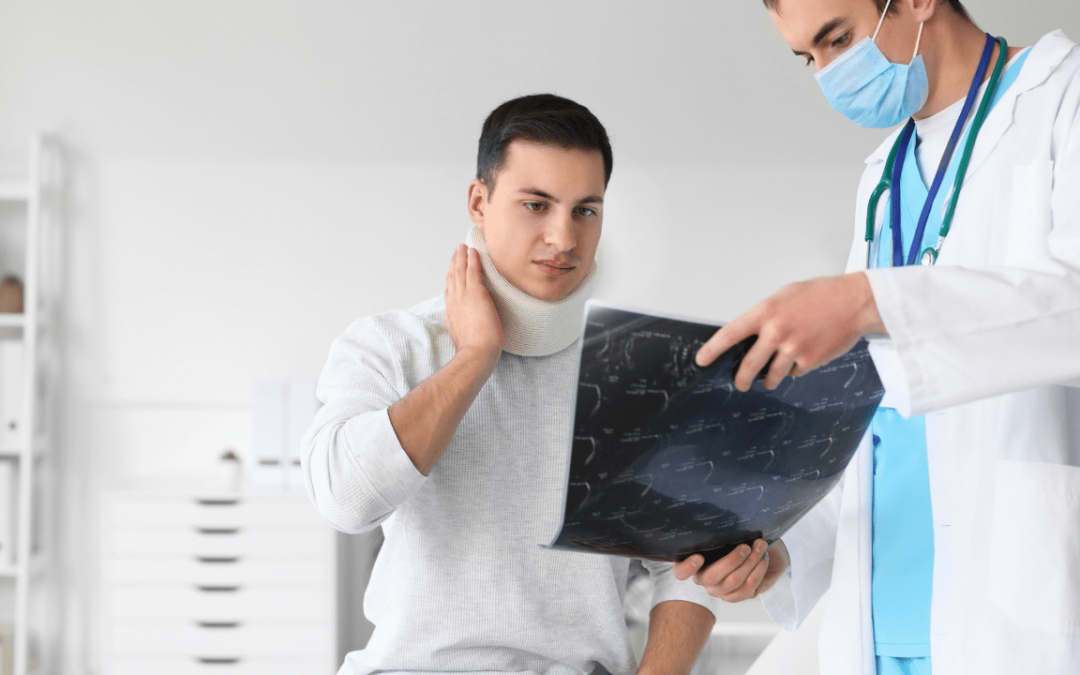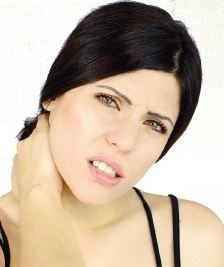Table of Contents
You may be suffering from neck pain frequently; and could suspect that it is not just a mere pain and stiffness. You may have trouble in securing a normal life in your days, or probably weeks, already. Likewise, you may be eyeing for ruling out what it is, and oftentimes, it can be Torticollis. This article will give you a comprehensive guide for torticollis.
Neck Pain, Twisted Neck, Wry Neck
Torticollis, also medically acknowledged as loxia or wry neck; is one of the border varieties of conditions that display flexion; extension together with twisting of muscles of the neck that exceeds their normal position. The Latin description of torticollis translates to the twisted neck. In this disorder, the neck tends to twist to one side, which then generates a head tilt. The condition can either manifests slowly if you have a family history of the disorder or can be acutely from trauma IQ; as well as it can also be because of adverse reaction to medications.
Types of Torticollis
When the disorder occurs in people with a family record, it falls under spasmodic torticollis, or cervical dystonia. The involuntary contractions of the neck muscles that trigger abnormal movements and awkward posture of the head and neck. This usually begins between the ages of 31-50. Spasmodic torticollis, if left untreated, becomes permanent.
Bending, or twisting, your neck too far can make way for acute torticollis. This disorder appears with few symptoms, however often you will appear uncomfortable; and will hold your head straight or rotated to one side. This also causes you to have a limited range of motion. Your neck muscles, on the affected side, that often hurts, will become tender to touch. The doctor, then, will have to check your nerve; and motor function to see if any spinal cord injury is present.
Lastly, Benign paroxysmal torticollis of infancy (BPT) is a rare medical condition in infants. These are the recurrent episodes or of tilting of the head to one side.
Symptoms and Signs of Torticollis
As we ruled out that the spasmodic torticollis is an abnormal compression of the muscle in one sidelong of the neck; you can observe that this displays in people with their heads wriggled to one side.
- People named with acute torticollis will be unwilling to flex their head to one sidelong, or may have their head turned slenderly away to the side where they are undergoing tension, pain; and discomfort,
- Deviation as well as alteration of the eyes; known as an oculogyric crisis is a condition where the eyes involuntarily look upward, which can be one of the signs of torticollis. Moreover; protrusion of the tongue or buccolingual crisis where the tongue sticks out involuntarily may also be a symptom of this condition.
- Other symptoms that can be present are shoulder pain, back pain, headache, together with neck cramps, muscle tightness; alongside muscle pain or burning sensations.
- There may exist episodes of benign paroxysmal torticollis present in infants may give your baby symptoms of vomiting, irritability, alongside infant drowsiness.
Causes and Risk Factors Present in Torticolis

In adults, there are various conditions where it can lead to acute torticollis. Occasionally, medical professionals may find no specific cause as well.
- Trauma to the neck or spine can make way for torticollis to manifest. Injuries obtained in the cervical spine or neck muscles often results in spasm of the muscles, that leads to the twisting of the head; one innate characteristic of torticollis
- If one had acquired an infection of the head or neck. These various contaminations can bring in inflammatory torticollis, attended because of swollen glands; adenitis together with lymph nodes present in one’s neck. The muscles overlying these present lymph nodes may contract. These situations can be life-threatening. Other infections concerning sinuses, ears, jaw, teeth, mastoids; surprisingly, even an infection of the scalp can also lead to having this condition.
- Rarely, tumors, scar tissues alongside arthritis of the cervical spine may also cause torticollis.
- There are definite drugs of abuse including ketamine, amphetamines, and cocaine as well as commonly prescribed neuroleptic drugs (prochlorperazine, chlorpromazine and haloperidol) can be stimuli for acute dystonia or lack of normal muscle control. This is a condition that involves the sudden onset of involuntary painful contractions of muscles existing in the face, neck, as well as back.
- Children, infants, alongside newborns are also vulnerable to acquiring torticollis rooting from congenital causes or hurt due to childbirth. Congenital muscular torticollis (CMT) is the most common causality of infant torticollis. The scarring of the sternocleidomastoid muscle on one side of the neck. This causes infants to sleep with their heads in the same position against the mattress, which can lead to plagiocephaly or flat head syndrome; which is also why it often accompanies muscular torticollis.
- Risk factors present in torticollis contain a family record of the condition; congenital abnormalities subsisting in the cervical spine, taking drugs susceptible to muscular spasm, and concussion.
When Should One Call a Doctor for Torticollis?
Generally, acquiring acute torticollis is not life-threatening. If one happens to injure his neck or acquire a spasm of the muscle, he must seek to be delivered to a hospital’s emergency department. Other medical circumstances may appear to be torticollis and thus in need of immediate medical attention. A health care professional will evaluate everyone who experiences spasms on their neck muscles, involved with swallowing or breathing, alongside other symptoms that might concern the central nervous system.
Contact 911 or get to a hospital emergency department if you experience the following:
- Trouble breathing or swallowing
- Pins-and-needles state or numbness present in arms and legs
- Urinary hesitancy, urinary or fecal incontinence
- Weakness in your arms and legs
- Impaired speech
- Difficulty walking
Types of Doctors That Treat Torticollis
You are probably to be diagnosed with torticollis by your family practician or internist, or if the condition is because of an experience of an acute injury, an emergency medicine specialist in a hospital’s emergency department ought to diagnose you. For infants and children, a pediatrician is accountable for diagnosis.
For further care and maintenance, your physician may refer you to a physical medicine and rehabilitation expert, a physiatrist, or an orthopedist who specializes in musculoskeletal disorders and treatment. Furthermore, a neurologist may also help you in treating some torticollis due to neurological conditions.
Physical Therapy
Physical therapy is by and large a primary treatment and medical care concerning torticollis, and you may see a physical therapist or occupational therapist to assist you in working on stretching and strengthening exercises.
What Tests Help in Ruling Out Diagnosis of Torticollis?
For the diagnosis of this medical condition, the doctor will take a detailed medical history of the patient. The doctor then will emphasize specific medications one will be taking and then perform a physical examination. If a history of trauma is present, the doctor will demand X-rays of the neck to exclude a fracture, or dislocation of the spinal bone in the patient’s neck.
- X-rays are electromagnetic radiation, resembling visible light. Unlike light, x-rays have higher energy and are able to pass through most objects, including the human body. Thus, this is helpful in generating tissues of structures present in a patient’s body.
- In small instances, subtle deformities or if one has pre-existing conditions, for instance, degenerative arthritis of the spine, a CT scan will diagnose torticollis. Computed tomography, or CT scan is a helpful diagnostic tool for examining and detecting diseases as well as injuries. It uses a series of X-rays, and a computer device to yield a #D image of soft issues alongside bones. It is a painless, non-invasive way for your medical practitioner to diagnose conditions, including Torticollis.
Treatments for Torticollis
Irrespective of the patient’s age, physical therapy hails as the primary treatment for all varieties of torticollis. This is because physical therapists can provide treatment that will effectively address the impairments present on torticollis. The early treatment produces the best outcomes. If not treated, unfortunately, torticollis will become a permanent condition, a very unfortunate burden.
The physical therapist will work with a child’s caregiver, or an adult patient, to craft and reach mutual healing and lifestyle goals. The physical therapist will be able to design an individualized treatment approach for:
- Strengthen neck muscles
- Correct muscle imbalance
- Gain pain-free movement (range of motion)
- Improve postural control and symmetry
- Enhances the body’s placement by alleviating muscle tension
These healing and lifestyle enhancement goals can be achieved through:
- Soft stretching of the neck together with back muscles
- Strengthening of the neck, moreover also the back muscles
- Massage of the affected area
- Guidance for correct positioning of infants
- Taping to lengthen the muscles to facilitate stretching
- A home-exercise system to continue gentle restoration at home
What kind of physical therapists should you seek for torticollis?
All physical therapists are prepared, because of extensive education and experiences, to treat a variety of medical conditions including torticollis. However, you still may want to reckon:
- A physical therapist who has a specialty in torticollis and this experienced in treating this condition
- A pediatric physical therapist for a child suffering torticollis
- A physical therapist, a board-certified clinical specialist or has training completion in pediatric or neurologic physical therapy. This kind of physical therapist has advanced knowledge, experience together with skills that may yield wonderful healing effects.
General tips for looking for a physical therapist. This can be applied to any other health care provider as well:
- Get recommendations for outstanding physical therapists from family and friends or from other health care providers.
- When you get through a physical therapy clinic for an appointment, inquire about the physical therapist’s experience in assisting people who have torticollis.
- During your first visit with the physical therapist, it is advisable to be prepared to depict your or your child’s symptoms in a very detailed and comprehensive manner, including what causes the symptoms worse.
Is surgery an option for removing torticollis?
Surgery is reserved for only a few selected cases, in rare instances. In this treatment, some of the upper neck nerves, as well as muscles, are selectively severed to prevent further construction of muscles. Surgical treatment often helps, but frequently the neck will return to its twisting position, passing through several months. Rarely, deep brain stimulation is done by inserting a wire into the brain, in parts where movements are controlled and then will facilitate electrical signal sending and this will disrupt brain signals that are the culprit of torticollis.
What Medications Help in Treating Torticollis
- If you are suffering from spasmodic torticollis caused by trauma or either by medications, the doctors will prescribe muscle relaxants in addition to anti-inflammatory drugs. This will then effectively relieve symptoms completely within a few days. Common medications to treat acute, spasmodic torticollis include benztropine, or diphenhydramine. Medical professionals usually administer these two medications into the muscles, or through the veins. The doctor, subsequently, will then add muscle relaxants or benzodiazepines. This medication will continue in the form of oral intake for 48-72 hours in preventing recurrent symptoms. Finally, ice packs and massage therapy will utilize for added relief.
- For cases of chronic neck muscle spasms, a neurologist may administer a local injection of botulinum A toxin (Botox). This toxicity comes from Clostridium botulinum, IQ bacteria. It acts locally in healing muscle contractions present in the muscles where it is injected. Furthermore, it can stop torticollis from long-term progression, and then effectively lead to complete recovery.
Home Remedies for Torticollis
Sleeping and prioritizing getting plentiful rest
Torticollis symptoms often disappear in times of lumber, and getting rest and lying down will help a person relax and thus ease symptoms and bring relief. Moving can sometimes amplify the discomfort and pain brought by Torticollis The time once sleep in the night varies, sleeping as early as 9 pm and waking up early, in synchronicity can enhance the overall physical and mental disposition of a person.
Using heat packs or ice packs
Hot packs are often recommended by physical therapists as it relaxes tight muscles, causing relaxed muscle tissues. It can also decrease pain caused by muscle tensions and spasms. Not only that, but it also causes vasodilatation of the blood vessels that are then responsible for increasing circulation to the affected area of torticollis.
In increased circulation comes in fast and efficient bringing of nutrients, oxygen, and cells that promote relief and healing. For ice packs, effectively minimizes pain from muscle spasms as well as inflammation that comes in bones and soft tissues. Touching the opposite side of the face, chin, moreover, the neck. Rather a trick, this can help to stop symptoms of spasms temporarily.
Reducing stress
We all know the damaging effects of stress on our physical and mental health. Stress in torticollis will cause muscles to tighten painfully and may worsen other torticollis symptoms. Knowing what triggers your stress, and using stress-reduction techniques, can help your symptoms at a minimum. Guided meditation, deep breathing, good nutrition, and an active lifestyle, as well as connection with others and taking time off of social media, are great stress-reducing techniques.
Exercises and Stretches for Torticollis
For infants, passive stretching, or stretches that are done with aid of a parent or caregiver can be helpful and thus may be performed. In older babies, facilitating active movements can also do wonders. For instance, using sights or sounds to get your child to turn their head in a certain direction will help their neck muscles to progressively strengthen. A physical therapist will recommend stretches, alongside other exercises, and show you how you can effectively do them.
Physical therapy exercises for adults suffering torticollis may include, graded step by step neck exercises. An adult patient will start by gradually moving his head a little further in each direction, one at a time. Then, he will try to keep his head in the final position for longer time intervals. If he cannot perform these exercises, another person may help assist with gentle passive movements. This must be done several times a day, looking in a mirror is also deemed helpful to see if he had been able to move his head further. Consulting a physical therapist is a prerequisite before doing these exercises correctly.
Swimming, doing yoga, and Pilates are some of the exercises, for people who have fitness goals that can also provide healing for their torticollis conditions.
Prognosis of Torticollis
- Prevention of this medical condition may not be possible, but the prognosis for torticollis is great. For the majority of people suffering from acute torticollis, the condition leaves them in several days, a few weeks is the longest. A small number of people, on the other hand, will go on to develop continuing challenges with their necks, and this can, unfortunately, go for months, if not years.
- For children, suffering from congenital muscular torticollis, physical therapy is a huge success most of the time and early prevention of it can diminish future problems.
- Medications, also, are successful in treating acute torticollis in most people. If a drug causes spasms, it should be discontinued, as it can be a pathway of irreversible torticollitis symptoms.
- Spasmodic torticollis, when insect with botulinum A toxic together with combinations of medication are also wonderful and effective in yielding healing of torticollis
- If the above conservative measures are deemed ineffective and do not bring relief, surgery on the nerves of the neck is the next step. Surgeries are successful most of the time. Patients undergoing neck surgery in respect of torticollis are able to lead a very normal life, however, it can only last for months, and a few years max, before they get a relapse and seek another surgery again.
- Complications of torticollis can go and be neck deformity and constant neck stiffness, pain, and discomfort. This constant tension manifesting in the neck will then result in muscle swelling and other neurological challenges due to pressure on the nerve roots
- Lastly, in some cases, people who become disabled from the unfortunate challenges of torticollis may have difficulty in performing their daily activities, and may no longer effectively drive. They can also develop depression.
Conclusion
With the comprehensive discussion we have just shared, we can observe how torticollis can be a very bearable and treatable condition to severe, severe condition enough to cause depression. While it is rather a very unfortunate truth, having this condition should, and must, not be an end of a wonderful, happy life.
Having acquired torticollis must be sought professional help, it is very challenging, but it does not have, and it is not meant to be dealt with alone. As we discussed its symptoms, there are also effective treatments for that, thus, healing can be greatly achieved. If you, your child, or a loved one is suffering from this condition, do encourage yourself or them to pay a visit for medical advice. It can go a long way, and nothing but relief and healing are to be found in doing that. Finally, share also, our words to others who might be in need. Knowledge and wellness are power, overall.






 I love to write medical education books. My books are written for everyone in an easy to read and understandable style.
I love to write medical education books. My books are written for everyone in an easy to read and understandable style.